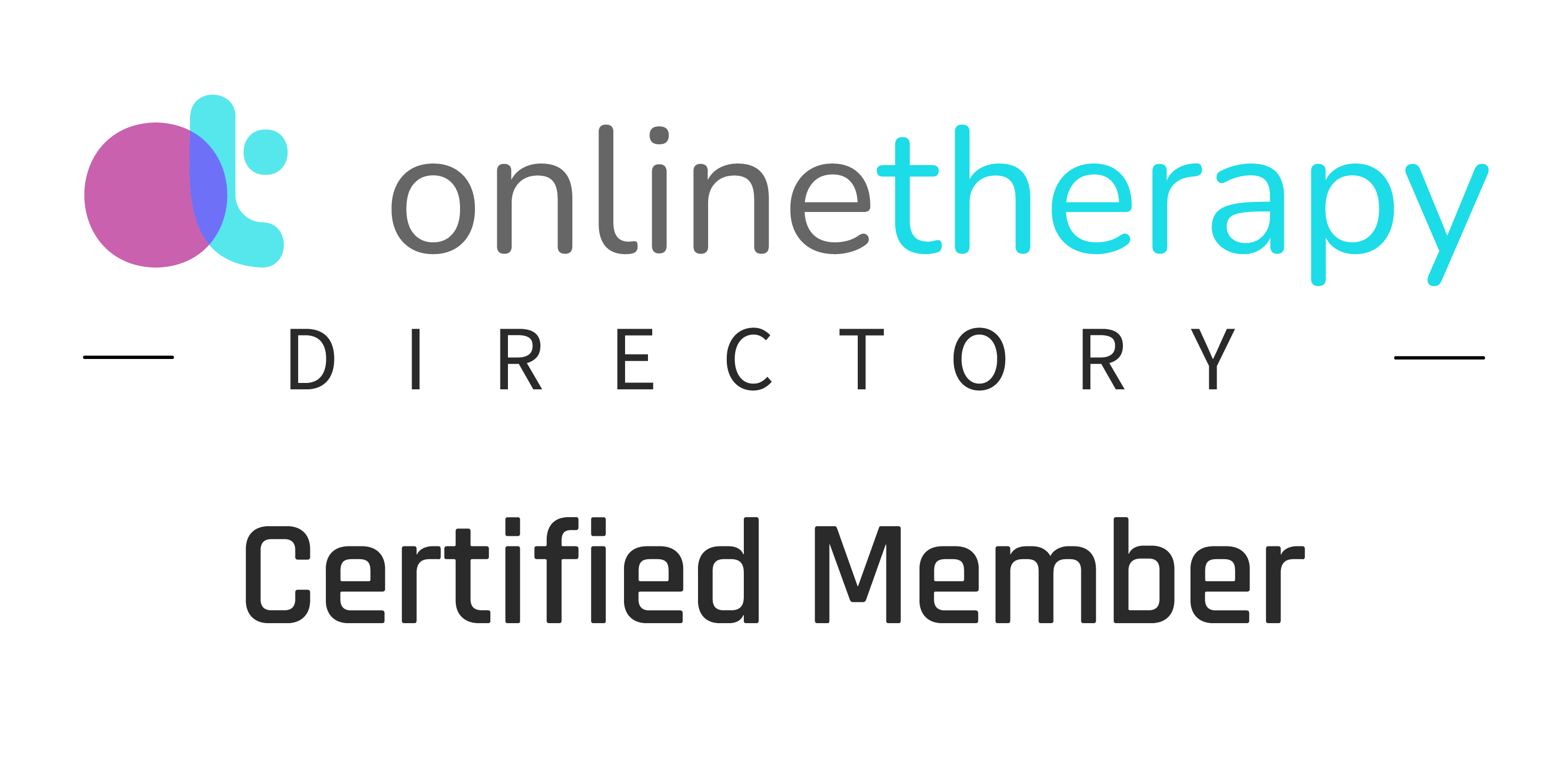How Does EMDR Therapy Work? Making Sense of This Powerful Technique
As our popular culture begins to embrace mental health and kick old stigmas to the curb, more and more people are learning the language of psychotherapy and all of the techniques the field has to offer.
And this is really exciting! But more popularity means more questions – especially when the approach is as rich and interesting as EMDR.
So let’s make sense of this powerful technique and what you can expect from the EMDR therapy process.
What Is EMDR Therapy?
EMDR stands for Eye Movement Desensitization and Reprocessing – a mouthful of a term that basically means using your natural eye movement to recall, reprocess, and reframe memories that carry negative emotions with them.
The technique was discovered by Dr. Francine Shapiro in 1987, who realized while taking a walk one day that thinking of her troubling memories while simultaneously looking around her was working to calm her down and make her feel better.
As she dug into the “why,” she discovered that the movement of her eyes – scanning the people and happenings in the park in front of her as she walked – was stimulating the two halves of her brain. This was allowing her to access and deal with her memories differently than usual.
She took this discovery and combined it with guided questions and talk therapy1 to create EMDR.
In the time since Dr. Shapiro’s discovery, EMDR therapy has been studied and shown to work well for not only people struggling with post-traumatic stress disorder (PTSD), but also anxiety, panic, and trauma, as well.
How Does EMDR Therapy Work?
EMDR therapy works through the process of “bilateral stimulation” – alternately stimulating each side of the brain. While Dr. Shapiro’s initial research included eye movement, the technique has also been shown to work through touch by tapping or holding buzzers, and through hearing by listening to audio tones.
As this stimulation is happening, your therapist will ask you to think about a memory you’ve previously worked together to identify and choose for this purpose. As you focus on the memory and the feelings surrounding it, your brain will begin to connect with the memory and begin to make other associations.
You’ll be asked to simply notice what happens. That will look like one of a few different things:
A thought, memory, or image might come to mind
You might begin to feel a particular emotion
You’ll experience a physical sensation
You’ll report back to your therapist, who will then guide you through a process of exploration around the original memory and what it sparks for you. This will allow your brain to engage in its own, natural healing process, ultimately letting you reframe the memory and emotions through an updated lens.
This processing is done at a client-driven pace. That means your therapist won’t force you to confront or feel more than you want to at any given moment. You’ll have full control over how quickly or slowly you process each memory.
EMDR therapy is based on the idea that – as the network center of our body and health – our brain wants to heal.
After all, it successfully and uneventfully processes memories every day.
When this process runs smoothly, those memories fall in line with our past experiences. We’re able to understand the implications of our experiences, correctly assess the level of danger or safety we’re in, and then – essentially – file those memories away to be accessed later, as necessary.
Sometimes, however, we find ourselves in such a high state of emotional stress that the feelings are stored in that filing cabinet, too. So when we access the memory later, the stress and negative emotions come flooding back, too.
At its core, EMDR therapy helps to remove the negative emotions from the memory. Our brains hold onto the useful information from the experience and dump the rest.
What Is EMDR Therapy Used To Treat?
Dr. Shapiro’s original intent was that EMDR therapy should be used to treat people struggling with PTSD – people like combat veterans, those who had been in accidents, or others who experienced a traumatic event like rape or assault.
And for this purpose, EMDR works very well.2 So well, in fact, that the US Department of Veterans Affairs officially recommends this kind of therapy for veterans of war.3
But there is mounting evidence that EMDR therapy can be used to effectively treat chronic issues like anxiety, panic disorders, challenges related to trauma, and depression stemming from adverse life experiences.4
EMDR therapy can also be helpful for people struggling with eating disorders, addiction, conduct problems, self-esteem, attachment disorders, grief, psychotic disorders, sexual dysfunction, chronic pain, and other issues.
What To Expect From EMDR Therapy
EMDR therapy works by lessening the impact of traumatic memories over time. The process consists of eight phases.
Phase 1: Client History
The first phase of EMDR therapy involves talking to your therapist about your history and the experiences you’d like to touch on. You’ll work together to identify a starting point for your therapy, as well as discuss your longer-term goals.
Phase 2: Preparation
During the second phase, your therapist will help you to understand the theories behind EMDR, as well as prepare you for any stress management techniques you may need or find helpful as you begin to process difficult memories. This phase can take a single session or more than one, depending on your unique needs.
Phase 3: Assessment
The assessment phase involves selecting one target memory from the memories identified in Phase 1. You’ll talk with your therapist about the image you see when you think of the memory, and the emotions and physical sensations that come up for you when you recall it. You’ll also discuss the negative cognitions, or self-beliefs, associated with the memory, as well as identify more positive and truer self-statements you’d like to replace them with.
Phases 4-7 (Desensitization, Installation, Body Scan, and Closure) consist of specific EMDR treatment techniques that access your stored memories, bring them to the surface for reprocessing, and remove the distress from the memory. You’ll actively replace your negative cognitions with more accurate self-statements and beliefs.
Your therapist will help you troubleshoot any remaining tension in your body related to the challenging memory. The goal is to, ultimately, leave you with neutral and calm feelings whenever you think about that memory.
Each session will end with a closure process, intended to help you feel positively about the work you’ve done and calm you before you leave the session.
Phase 8: Reevaluation
The final phase of EMDR therapy provides an opportunity for both therapist and client to evaluate progress after each session. This will help your therapist design the best and most effective course of action, as well as help to wrap up the overall EMDR process when you’ve completed your work together.
How Long Does EMDR Therapy Last?
A single EMDR therapy session typically lasts sixty or ninety minutes. How many sessions you’ll have will depend on your unique history and your goals for EMDR.
While you can feel better fairly quickly with EMDR, the timeline is not the focus of this kind of therapy. The speed at which a participant moves the eight phases will vary from person to person.
So… Is EMDR Legitimate?
YES! EMDR therapy is a legitimate therapy practice based on decades of scientific research. It’s been proven effective time and again and continues to undergo stringent study.
If you are struggling with PTSD, trauma, anxiety, or panic attacks, EMDR may be a great option for you.
I’m excited to offer both in-person and online EMDR therapy for clients in Orlando and the state of Florida. Get in touch to start the conversation today!
ENDNOTES
1 https://www.ncbi.nlm.nih.gov/pmc/articles/PMC3951033/
2 https://www.ncbi.nlm.nih.gov/pmc/articles/PMC5997931/
3 https://www.healthquality.va.gov/guidelines/MH/ptsd/cpg_PTSD-full-201011612.PDF
4 https://www.ncbi.nlm.nih.gov/pmc/articles/PMC3951033/



